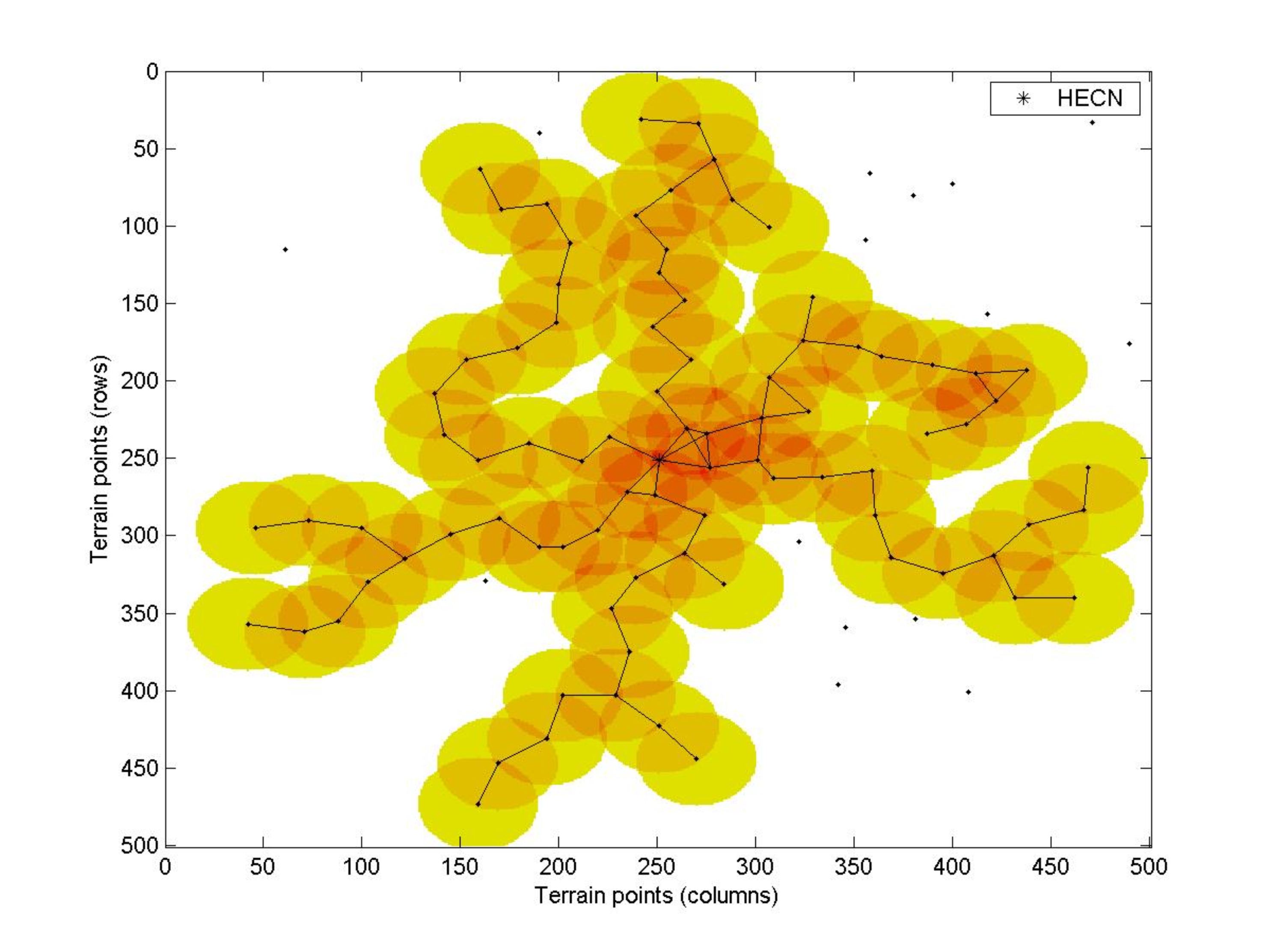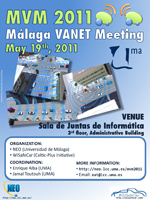DIRICOM
Intelligent Design of Wireless Sensor Networks (WSN)
A Wireless Sensor Network (WSN) is an ad hoc network. It consists of a large number of elements called sensor nodes, small devices with sensing, processing and communication capabilities, that gather information regarding the measurement of a physical variable (temperature, humidity) and send it to a special node called HECN. The nodes are deployed in an area called sensor field, each one monitoring a small part around itself and, ideally, the whole field is jointly monitored.
In a WSN the information is transmitted between the HECN and any particular node using intermediate nodes as relays. Since the network is ad hoc there is no infrastructure and nodes have to automatically organize themselves to establish the communications. But the main particularity lies in the nodes themselves which, being of small physical size, have constrained capacities. In special the available energy in a node is a critic value, since the nodes have to operate on a small energy source (e.g. two AA batteries) for a long period (e.g. 1 year).
Each sensor node has an associated sensing radius RSENS that determines its covered region (a circle around itself) and a communication radius RCOMM that indicates the wireless link range. The network is formed in such a way that every node can find a communication path to the HECN (see figure below).

The energy consumption for communications in every node (their own data, plus every other data relayed through itself) can be minimized instead of the number of nodes in the network (a fixed value). In this case the two objectives are opposed since the first (maximizing coverage) tends to spread the nodes so that they cover a larger area, while the second (minimize the energy) tends to concentrate them around the HECN so the number of retransmissions is minimized.
We are currently working on a design problem for a network of 100 nodes in which the ratio between RSENS and RCOMM is varied to study its effect on the resulting configuration.




 (EMARTV)
(EMARTV)
